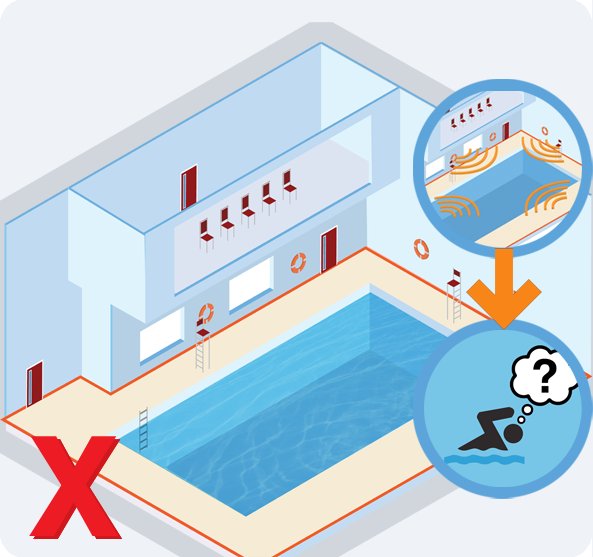Impractical Loop Installations
We have seen many examples of requests over the years for induction loops which are clearly not thought out, they would provide little to no benefit for the user, cost a small fortune to provide and invariably end up not getting used.
To achieve a worthwhile benefit consider the following,
- is the room or space likely to be used by a potential user for some period of time?
- Is there an obvious sound source i.e. a person speaking?
- Where can a microphone be located close to the source?
- Is confidentiality a requirement? (loops will overspill)
- Will there be a sound system of some sort to possibly connect to?
- Is the room a rectangular or square shaped format? (Irregular shapes do not perform consistently)
- Where can an actual loop cable be installed in a regular shape, floor, skirting, ceiling?
- Is there any significant amount of metalwork in the construction of the floor or ceiling of that space? (This can have a huge impact on the loop strength and performance)
Swimming Pools
The logic in recommending a poolin a local authority leisure centre is questionable for several reasons. The areas are generally quite large and therefore require a large loop amplifier, heavy cable and a complex installation around the area to be covered. The typical hard of hearing swimmer is most unlikely to enter the water with their device in the ear due to the damage it could cause. Similarly one has to question what exactly would they expect to hear over the loop system if they remained out of the water, a loop microphone somewhere in that area or the centre PA system? Remembering that when the user switches to the “T” position to receive the loop audio, they actually turn off their own local microphone for general pickup, thereby switching themselves off from the outside world!

A public seating area overlooking a pool, may be a slightly more practical location, however tiered seating on a steel re-enforced concrete base does not lend itself to a cost effective installation, and the only practical sound source would be the PA system. Improving PA speaker coverage with a localised loop might be a better solution.

Health Care Waiting Areas
A common and possibly ill thought out proposition is for a typical waiting area in a hospital or health centre. Inserting a local microphone in the area will only pickup random conversations and general background noise which is of no benefit. Locating a microphone at the reception will result in all conversations behind the counter being sent through the loop, some of which would be highly confidential and inappropriate. Providing a switch on that microphone would alleviate the problem, however it would also become an irritating function for staff every time someone was called.
One or more induction loops at the actual counter windows is a more practical solution for the hard of hearing, with a simple PA system calling patients in the waiting area.
Corridors, Dining Areas etc.
The key question to ask here is what exactly is going to be the benefit for someone with a hearing aid. In a restaurant they may be static for some time whilst eating, but what exactly would they be listening to? It is impossible to put a microphone at every table, and if so there would need to be multiple loops or everyone would listen to every other conversation in the room. Amplifying the general background noise with one or two general microphones achieves nothing and is of no benefit whatsoever.
Clearly in a corridor which is a transit area, there is no sense in considering anything as no one is static for anytime and there is no obvious dedicated sound source other than someone walking alongside a hearing aid user.









